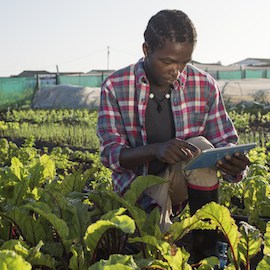SACCOs, Social Collateral and Bitcoin Communities: A Filmmaker Documents New (and Old) Ways to Extend Financial Inclusion Past the Limits of Fintech
In 1993, at a time when the HIV/AIDS pandemic was raging in Africa, my father, a medical anthropologist, embarked on a unique initiative. He was convinced that HIV prevention programs needed to be radically different from the typical donor-driven interventions, which lacked an understanding of how to make HIV/AIDS programming effective in communities where Western approaches didn’t always align with the logic and rationalities of local beliefs.
He established an NGO called Salama SHIELD Foundation in 1994, with an initial emphasis on HIV prevention and support. Recognizing that impoverished communities were among the most vulnerable to HIV transmission, the organization incorporated a microcredit revolving loans program into its strategy in 2004, in which it provided 15 – 20-member groups of local women with loans, which were then disbursed to individuals within the groups and gradually repaid. These women held one another accountable for repayment and stepped in to cover individual defaults caused by unforeseen expenses — from illness to funeral costs and other sudden emergencies. The goal was to provide them with a tool to lessen their poverty, alongside the education-based initiatives and interventions the foundation offered — and thereby reduce their vulnerability to HIV/AIDS.
I worked at the foundation from 2012 to 2015, and I was tasked with creating a series of short videos designed to showcase the positive impacts of the microcredit program, in order to attract donor support. But as the video project progressed, my own assumptions about the effectiveness of the microfinance sector began to unravel.
What started as a fundraising activity gradually shifted into a deeper journey of critical inquiry.
The focus soon evolved into a broader exploration of whether microlending still held relevance in a rapidly changing world — one increasingly shaped by digital technologies and market-driven development initiatives. Between 2017 and 2024, I collected and filmed stories from across seven countries (including five in Africa), which highlighted the different ways people leverage formal, informal and digital finance. These stories revealed a variety of local financial systems that, on the surface, appeared unstable, but were actually based on powerful networks of trust, support and resilience. What emerged was not merely a story about finance, but about human relationships — and about how systems can be built not on credit scores or profit extraction, but on cooperation, accountability and shared survival.
The resulting documentary film, “Unbankable,” was released last year, with the goal of helping to reframe and expand the global conversation around financial inclusion. Below, I’ve shared some key stories from the movie, which show how Africa’s informal, trust-based financial systems offer valuable models of resilience, adaptation and survival that could find new applications in other emerging countries — and also in the Global North, as it navigates its own growing economic instability.
The Value of ‘Social Collateral’
The first stop in the film is Lyantonde, a small rural community in southwestern Uganda where my father conducted his ethnographic research. Even today, the microcredit revolving loan program the foundation created remains active there. With no collateral, credit scores or formal banking algorithms, small loans are provided to community groups: women not related by blood, but bound by shared experiences of poverty. Their only enabling resource? Community-acquired trust, accountability and “social collateral.”
As I listened to the stories of these women, I couldn’t help comparing their economic hardships to those faced by individuals in the West — people struggling with unaffordable housing, massive credit debt and a lack of community support structures. Here, in Uganda, was a working example of how community-based groups can enable people to build their shared resilience even without formal support.
In one such story, I heard how two groups of women were on the verge of eviction (as squatters — a common situation in these communities) because the owner of the land they were living on had gotten into debt and could no longer afford the mortgage.
After hearing their land-ownership predicament, the foundation stepped in with a loan that enabled the women to buy the land outright, allowing them to stabilize and formalize their housing situation, and providing the landowner with a pathway out of debt. It required no collateral and requested no credit scores — just trust, experienced reliability and a system of community-recognized accountability. The group was the security: This was social collateral in action.
Could this gradually built, community-based trust be the key to broader economic security and stability in countries like Uganda? Might it even hold relevance for Western contexts? I left the village with more questions than answers — but also with a sense that the approach holds global relevance, since in the West, people also face home foreclosures and the fallout of financial default. It raises the question: Beyond the loss of collateral, what are the emotional, physical and economic costs for individuals and families when defaults occur?
The Role of Savings and Credit Cooperative Organizations (SACCOs)
SACCOs (Savings and Credit Cooperative Organizations) are not a new concept in the financial inclusion conversation. But as community-driven initiatives that empower individuals to take control of their own financial futures, they are often overlooked. Perhaps this is due to their self-governing nature, which makes them less prone to similar, but more profit-driven interventions, like formal microcredit or digital loans. Unlike microfinance institutions, SACCOs are not companies — at their core, they are communities.
In SACCOs, policies are member-made, and profits from any interest payments from loan recipients are shared. In contrast, microfinance institutions distribute profits to their shareholders, who are often far removed from the communities they serve. SACCOs offer a more social, humanistic approach to economic development.
As I searched for stories that could exemplify this for a Western audience, I sought out a SACCO in action. I embarked on an 11-hour road trip from Kampala to a place called Okere City. There, I met Ojok, a self-assured community leader whose vision for the village he led mirrors the aspirations of Africa’s emerging “smart cities.” He led me to the heart of the village, where every Saturday, the community gathers to bank together. That’s when I first saw the green box.
“The box usually has three padlocks,” he explained. “Three different people must hold the keys. The box is not stored in any of their homes. All three must be present for a savings activity to proceed. This box is the village bank.”
What I witnessed next was both secure and ceremonial: The community came together to watch and participate as dividends were paid, new loans were issued, and general ledger reporting was shared with everyone present. I later found villages like Ojok’s across the region — communities that had their own secure boxes, and that included the entire adult population in the same SACCO. Some of them had even built on this concept by introducing digital tools like mobile money to enhance their ability to track savings, dividends and payouts. However, the proliferation of these tools raised a question: Was the humble green box an approach that needed to be supercharged through Western technologies and interventions — or was it a model that was already enabling community-driven banking services that met people’s key needs?
The Limits of Fintech in Reaching the ‘Unbankable’
When I began this journey, I believed fintech could solve the “unbankable” dilemma: millions lacking access to credit and a safe haven for their savings. But while I saw that many founders and CEOs of fintech companies mean well, my perspective shifted when I visited Anne, a digital loan borrower. Though she had applied for dozens of jobs, she was facing a prolonged period of unemployment, and ultimately turned to digital loans to help cover her expenses. When I met her, she was utilizing three or four different loan apps simultaneously, paying down one loan with another and spiraling deeper into debt. Sadly, she had even begun pulling her friends into the same cycle of despair. Instead of supporting a SACCO model, Anne encouraged others to use third-party lending apps. Josephine, her close friend, was one such borrower:
“When I started using the apps to take loans, I took from many,” she explained. “I ended up unable to pay. They started calling me. I don’t know if they hacked my phone, but they even called my pastor. He told me: ‘Go and pay that loan.’ I said I had no money. He gave me the money, but I still went back and took a loan again.”
While the sector is well familiar with predatory loans, documentary viewers new to the financial inclusion conversation are not. I included Anne and Josephine’s story in the film to provide the basis for contrasting how communities were thriving on the SACCO model, while formal borrowers were struggling with loans enabled by individualized tech. With many SACCO groups integrating mobile money and digital tools into their operations, seemingly with great success, there’s a growing case for refocusing financial technology innovation, shifting from enabling high-interest loans from microfinance companies to offering technologies that allow communities to lend on their own terms.
It was through this shift in the story that the filming and overall narrative of “Unbankable” took a gradual turn to Bitcoin. I was introduced to Kgothatso Ngako, who started Machankura — an app that lets people in Kenya, South Africa and other markets send and receive Bitcoin using simple USSD codes, without needing the internet. In a world of unpredictable inflation and currency fluctuations, this approach could, arguably, supercharge and future-proof communities that are building on the self-contained SACCO model. If a SACCO hopes to integrate into a network of similar communities and micro-economies that span other countries, moving to something more stable than the local currency can prevent its funds from losing value to inflation or shifting foreign exchange rates.
Bitcoin Experiments
In Mossel Bay, South Africa, I encountered an example of the kind of experiment that could reshape the global SACCO approach: a community using surfing as a gateway to financial literacy, with Bitcoin at the center.
While critics might argue that this isn’t the kind of financial education children need, Herman and Evgenia Vivier, the founders of Bitcoin Ekasi and The Surfer Kids (a South African nonprofit launched with a bitcoin donation), see it differently. They believe teaching youth to view bitcoin as a long-term investment tool offers a counter-narrative to the culture of instant gratification driven by fast, predatory digital loans. Through the Bitcoin Ekasi project, the non-profit aims to build a Bitcoin-based circular economy modeled after Bitcoin Beach in El Salvador, while familiarizing young people with the concepts of long-term saving and investment by providing them with financial literacy training and some Bitcoin to invest. This introduces them to a path to income that contrasts to the short-term debt cycles and digital loans common in their communities.
Integrating local retailers into the Bitcoin economy is one of the core elements of these communities. At a local shop within the Bitcoin Ekasi community, I made a one-time purchase in Bitcoin using Kgatho’s Machankura app — it was surprisingly straightforward, much like a mobile-money transaction. It was hard not to imagine how this technology could be applied successfully to SACCOs.
However, scaling this approach and fusing it with the SACCO model would require entire villages or cities to adopt SACCO-like models based on Bitcoin, And as the economist Frances Coppola explains in the film, while it may be safe for individual communities to run on Bitcoin, once a Bitcoin holder leaves that community, the cryptocurrency’s unpredictable price fluctuations can become a bigger risk. Yet experiments like Bitcoin Ekasi introduce an intriguing new element to the conversation: How might Bitcoin communities and SACCO structures meaningfully intersect?
Regardless of one’s stance on Bitcoin, it serves as a case study for how technology can advance financial literacy and foster innovative community-centric practices. Unlike typical fintech apps, which compete with each other and rarely engage in collaborative resource-sharing to identify gaps in design, the global Bitcoin community operates on open-source principles — white papers, shared code and collective experimentation. White papers from Bitcoin Beach in El Salvador, for example, are now being shared and repurposed by other grassroots communities around the world. As Glenn Jooste of Bitcoin Ubuntu, another South African community iterating on the Bitcoin Beach and Ekasi approach, put it: “To my surprise, many more [Bitcoin] communities have explored these documents, and there are hundreds of them now — little fires popping up all over the planet.”
“Unbankable” began as a modest attempt to document a microfinance program, but it evolved into a far-reaching exploration of how communities across the globe are redefining trust, value and resilience. In the process of making the film, one insight stood out: The future of financial inclusion will not be shaped by lending models, technologies or data-driven solutions alone, but by a deeper appreciation of the human stories, cultural perspectives and lived experiences that influence how financial tools are understood — and by whom.
SACCOs, digital wallets, the concept of social collateral and even Bitcoin all represent pieces of a much larger puzzle. The challenge ahead for the sector is to remain open to that complexity, resisting one-size-fits-all fixes and instead honoring the varied, grounded realities that make inclusion possible. “Unbankable” aims to offer a glimpse into that complexity, and my hope is that it will be used as a tool to expand the lens of the financial inclusion conversation. You can visit the film’s website for information on where it can be viewed in your region.
Luke Willms is an award-winning writer, director and producer, and the founder of Mbuntu Media.
Photo: Scene from Unbankable, courtesy of Mbuntu Media Inc.
- Categories
- Finance, Technology



